Wagner’s main theatre of activities has always been on the African continent. This is one corner of the planet where Prigozhin ran into an easy windfall, earning from desperate governments either through direct cash payments or via acquisition of lucrative mining concessions. It was never accurate to say that Wagner was merely a front for the Russian Ministry of Defence with Prigozhin as a figurehead. It was much more than that, as Putin himself alluded to when he qualified his statements about Kremlin’s huge payments to Wagner by adding that the mercenary outfit also made money that “had nothing to do with the Russian State”. Putin had been speaking in the context of an announced police investigation into the finances of Prigozhin’s Concord companies in the aftermath of the failed mutiny.
As of today, Wagner Private Military Company (officially “The Wagner Group”) still exists intact on the African continent and continue to carry out their counterinsurgency activities and other security work without any obstacle.
As with anything related to Russia and Russians, the global-spanning mainstream media outlets of Europe and North America are quite shrill when it comes to Wagner Group. Everything about this Russian mercenary outfit is “irredeemably evil” and “genocidal”, we are told ad finitum by the mainstream media.
SIDE BAR: A SHORT DIGRESSION INTO CHINA—AFRICA RELATIONS
The unnuanced, caricaturish media description of the Wagner Group often reminds me of the Euro-American media’s equally cartoonish description of China’s trade relations with the African continent. In the virtual fantasy world created by the media, China is “colonizing a continent of hapless, poor sods who are apparently too stupid to notice.” What makes the whole thing hilarious is that the journalists, pundits and government officials saying these things often hail from European countries that colonized the continent back in the 19th century.
Of course, back in the real world, the Africans are not docile and hapless. They fought for their independence from the colonial empires of Europe. In some cases, they picked up machine guns, rockets and bombs and used it to force the European colonial empires to retreat. So if Africans feel that China is colonizing them, they will act accordingly. However, at this point in time, there is no reason whatsoever to think that anything the mainstream media is saying should be taken seriously. Despite non-stop propaganda from the global-spanning media outlets, several polls conducted by Gallup Inc. and Pew Research Centre continue to show that majority of ordinary people in various African countries view China in good light. So why does the propaganda fail to penetrate minds on the continent? Well a look at this link may disabuse a few readers…
The story of the work of the Wagner Group on the continent is more nuanced than is often described in the hysterically russophobic mainstream media and those African media outlets that just “copy” and “paste” the reports written by Euro-American press news agencies such as Reuters, Agence France-Presse (AFP) and Associated Press (AP).
I am never going to say that Wagner’s activities on the continent is clean and that they commit no human rights abuses or that innocent civilians never get killed in their counterinsurgency operations. I am sure that some of that happens. What I will like to do in this article is simply to put down my nuanced thoughts about the Wagner Group; how its mercenary personnel are perceived by ordinary citizens living in the African countries where they operate; what I believe to be the true origins of this mercenary outfit; and the long term effect of Prigozhin’s mutiny on Wagner Group activities in the handful of African countries where it operate. Contrary to the perception created in the mainstream media, the mercenary outfit’s activities are limited a few African countries, most of them being politically unstable Francophone African countries where anti-French sentiments are widespread.
THE RELATIONSHIP BETWEEN WAGNER AND THE RUSSIAN FEDERAL STATE:
(1) PREAMBLE:
I will start by saying that I have never agreed with those commentators who state that Wagner is merely a front for the Ministry of Defence (MOD) with Prigozhin as a figurehead. The way the mercenary outfit’s past and present behaviour have never supported that bold assertion.
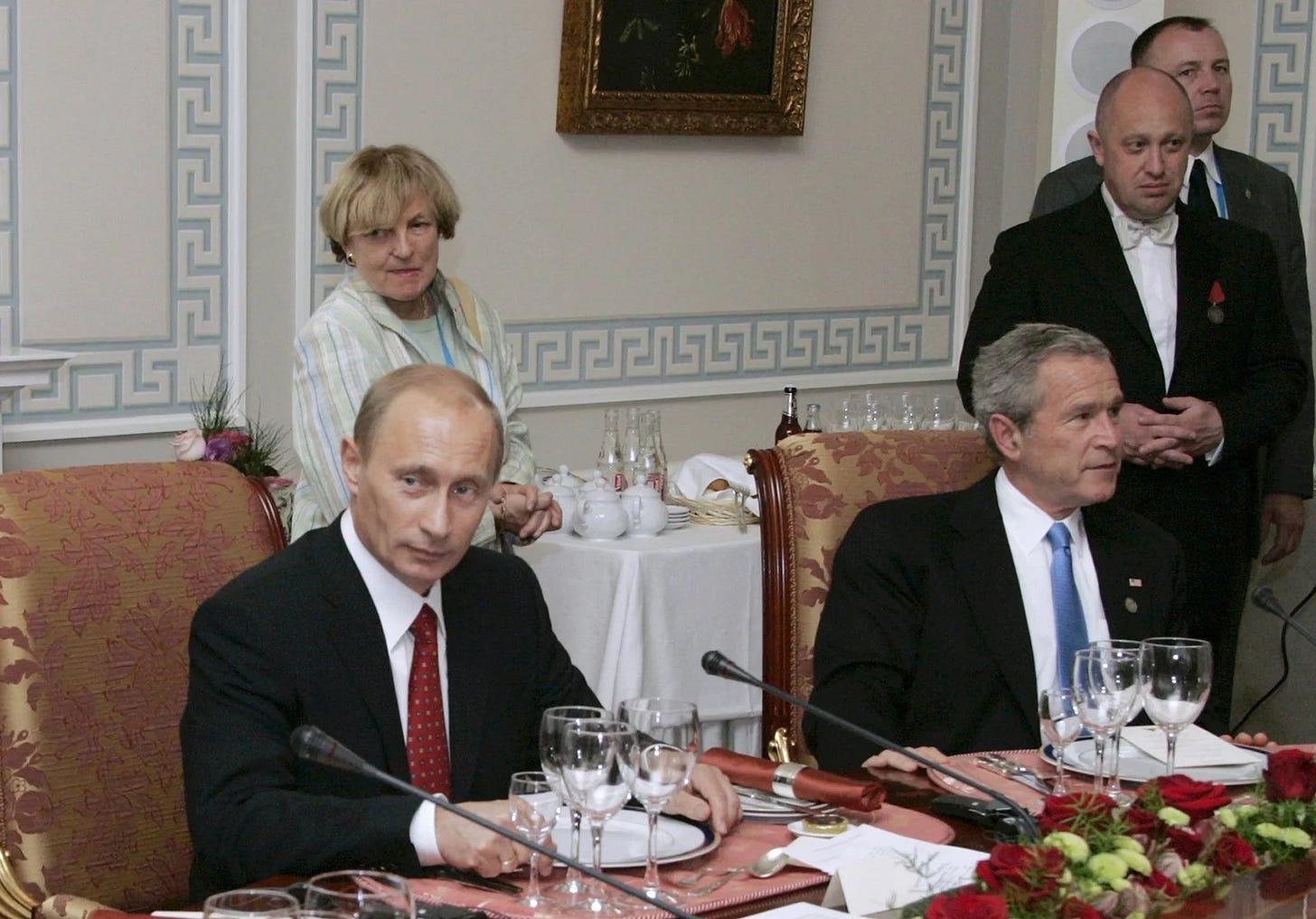
If Wagner was really just a front for the Russian MOD, with Prigozhin as a figurehead, then he would have been sacked the moment he began to disparage the Defence Ministry and heap personal insults on Defence Minister Sergei Shoigu and Chief of the General Staff Valery Gerasimov. If Wagner were really a front, then a new figurehead would have long replaced the foul-mouthed Prigozhin.
No doubt, Wagner is definitely a foreign policy tool of Russia, but by no means under the control of the Defence Ministry because it is actually a private entity run by Prigozhin and Utkin with the Kremlin acting as an unofficial stakeholder and silent investor. I will expand on this assertion as the article progresses by presenting some evidence, so bear with me.
Definitely, the Defence Ministry’s intelligence arm, the GRU, contributed to the creation of Wagner at the behest of the Kremlin. In spite this fact, the mercenary outfit had always been free to operate independently; and that was fine, so far the Wagner Group operated far away from the jurisdiction of the Russian Ministry of Defence. That is, so far, it worked in far flung places such as those on the continent of Africa.
It is very unlikely that Shoigu or Gerasimov had any interest in what Prigozhin and his Wagner fighters got up to in Africa. In fact, I am yet to read any story of either Shoigu, Gerasimov or any other senior Russian MOD official visiting any of these African countries where the Wagner Group have been operating for years, which is pretty strange for personalities who are supposedly controlling the mercenary group as a front.
By contrast, there is plenty of evidence of a steady stream of Russian foreign ministry officials, Sergei Lavrov and his subordinates, visiting these countries frequently, which will accord with my thinking that the mercenary outfit is a private enterprise implementing an aspect of the Kremlin’s foreign policy.
Whilst inside Ukraine, Wagner Group was compelled to operate under different rules. The Kremlin had it sign a fresh contract with the Russian Ministry of Defence. This contract subjugated the mercenary outfit to the dictates of Defence Ministry, which was also responsible for paying Prigozhin and his men, and supplying them with military gear while they operated in the battlefields of Eastern Ukraine. In the African states, that is not how Wagner works at all.
Outside Ukraine, it is incorrect to say that Kremlin exclusively funds and supplies the Wagner Group. African countries in need of Wagner’s services always sign a paid contract with Prigozhin and pay him either cash money or grant him lucrative mining concessions since many of these states are often rich in platinum, gold or diamond.
There is no doubt that the Kremlin does supply a great deal of Wagner’s military equipment, but the host African countries also buy some of the weapons used by Wagner mercenaries. A few of these weapons purchased for them by the African states are not even manufactured in Russia or the defunct Soviet Union.
Before I discuss Wagner’s operations in Africa, I must talk about my own theory about Wagner’s origins.
(2) THE ORIGIN OF THE WAGNER GROUP:
My own opinion is that Wagner’s creation was probably Prigozhin’s suggestion to a problem that Putin was grappling with for some years.
You don't agree? Well hear me out first...
Russia's rising profile in the world had led to the governments of friendly countries struggling with all kinds of internal insurgencies to beg the Kremlin for Russian troops. Mindful of the fact that Russia is not the colossal Soviet Union, and that sending regular Russian soldiers to far flung countries would meet with the disapproval from the Russian populace, especially if those soldiers start returning home in body bags, Putin had no choice than to turn down most of those requests.
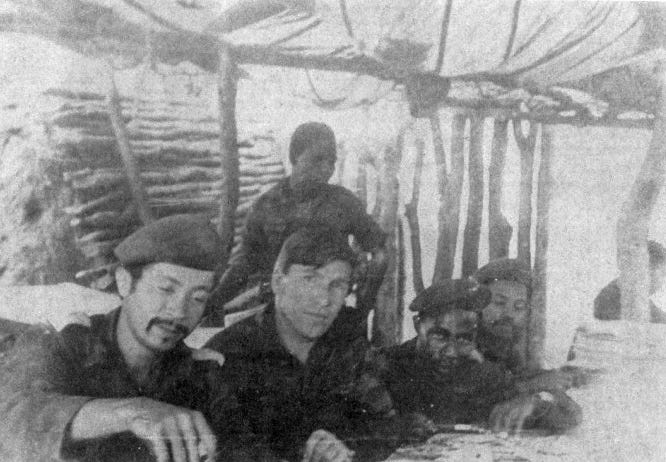
And in the few cases where a risk-averse Putin provided regular Russian troops to faraway war-ravaged countries, the number of soldiers was often small, and even then, they only served in the rear, far from the battlefront, as military advisors.
Two good examples are:
The small Russian military advisory team in Syria that was active in the civil war from March 2011 until August 2015 when Putin finally bit the bullet and approved a large-scale Russian military intervention in the Levantine country.
The micro-sized Russian military advisory team in the Central African Republic before mercenaries of the Wagner Group intervened there in March 2018.
I will like my readers to recall that when the Syrian Civil War broke out in March 2011, Russia only had a tiny number of Russian soldiers originally there to train Syrian troops. As the war progressed, the Russian trainers transformed into a military advisory team, giving advice on tactics and strategy to an overwhelmed Syrian Army.
At the time, Putin’s full commitment of Russia’s regular military forces to the Syrian conflict was still four years away. It would take Iranian General Qasem Solemani’s fateful trip to Moscow in July 2015 to convince the Russian President to mount a large-scale intervention in Syria to rescue the Assad government. In August 2015, a month after Solemani’s visit, Russian military aircraft, several T-90 tanks, artillery and combat troops began moving to Syria. By September 2015, warships of the Black Sea Fleet were patrolling the eastern part of the Mediterranean Sea.
Before that large-scale intervention by Putin, in the period between March 2011 and August 2015, the main Russian contribution to the Syrian government’s flagging war effort was the sharing of signal intelligence and that small Russian military advisory team in the rear of the battlefront, which was not as effective as the Iranian Revolutionary Guard paramilitaries, and their Lebanese Hezbollah allies, fighting directly on the frontlines alongside Syria’s military forces.
In 2013, the Kremlin tried to compensate for the lack of frontline troops by encouraging the initiative of former soldiers— such as former GRU Spetsnaz Lieutenant-Colonel Dmitriy Utkin— who went over to the Levant and fought as mercenaries in the service of the besieged Syrian state.
When the Hong Kong-registered Russian mercenary company, the Slavonic Corps, became available in October 2013, many of these ex-soldiers going to Syria began to join it, even though the Kremlin at that point in time still frowned at the very existence of mercenary companies, which remains illegal under Russian law. Indeed, some members of the Slavonic Corps, including its two Russian founders, were actually arrested by FSB intelligence officers as soon as they returned to Russia for belonging to an “illegal organization”. That was in November 2013.
But then, six months later, it seems there was change of heart in the Kremlin over the idea of having mercenary outfits around. In May 2014, I believe that Yevgeny Prigozhin and his Concord Management & Consulting business partner, the ex-soldier, Dmitriy Utkin, approached Vladimir Putin with a proposal that would provide a permanent solution to the Russian leader’s conundrum—how to satisfy the request of friendly countries in desperate need of Russian military assistance and yet not commit significant numbers of regular Russian troops to far flung foreign territories.
The permanent solution to Putin’s conundrum was a suggestion that a mercenary force bearing the nickname of Utkin (i.e. “Wagner”) be created.
Putin has always been against the idea of mercenary outfits in general, but he probably agreed because the incipient Wagner mercenary force was going to operate outside the territorial confines of Russia. It was going to operate in Syria and in the Donbass region, which at the time was still recognized by the Kremlin as part of Ukraine. Since private mercenary outfits were illegal under Russian law, the Wagner Group was registered abroad in 2014. Argentina is often cited as the country where it was registered.
The newly born private mercenary outfit, The Wagner Group, received money and weapons from the Kremlin before it deployed officially to Syria and clandestinely to the Donbass region of Ukraine.
SIDE BAR: THE EARLY PERSONNEL RECRUITED BY WAGNER GROUP
Many of the Russians and citizens of other nations who would eventually become the earliest recruits of the Wagner Group had fought as individual volunteers on the side of the East Ukrainian rebels against the post-Maidan regime running the Ukrainian state. When Wagner Group became available, many of these volunteer fighters signed up. That gave the mercenary outfit a clandestine presence in Ukraine.
Many current members of the Wagner Council of Commanders (WCC) were among the earliest set of mercenaries to be recruited, and the ones with the longest combat experience in both Syria and Africa. After the failed Wagner mutiny of 23-24 June 2023, many of these commanders would elect to follow Prigozhin into exile in Belarus rather than accept Putin's offer to be absorbed into the regular Russian armed forces or simply take an amnesty and return to their homes inside Russia— a strange behaviour if the WCC was indeed a Defence Ministry-controlled front filled with active-duty GRU military operatives posing as “mercenary commanders”. But not so strange if you consider the possibility that the WCC is a genuine committee of retired soldiers-turned-mercenaries tightly loyal to their employer, Prigozhin, and partake in his disdain for the Defence Ministry to which they owe no allegiance whatsoever.
Prigozhin and his partner, Utkin, always had full control of the mercenary organization, but received minimal oversight from the Kremlin and no supervision at all from the Russian Ministry of Defence. As I stated earlier, this arrangement worked without friction and any tension with Russian MOD so far Wagner Group operated far away from the territory of Russia and neighbouring countries that were once part of the defunct Soviet Union.
While Syria qualifies as a “far flung place” as well, the situation there is a bit different. Once Putin had ordered Defence Minister Sergei Shoigu in August 2015 to begin a large-scale military intervention in Syria, the Russian MOD began to consider the Middle Eastern country as part of its jurisdiction. Inevitably, tensions soon grew between Russian MOD and some Russian mercenary outfits operating in Syria, especially the Wagner Group.
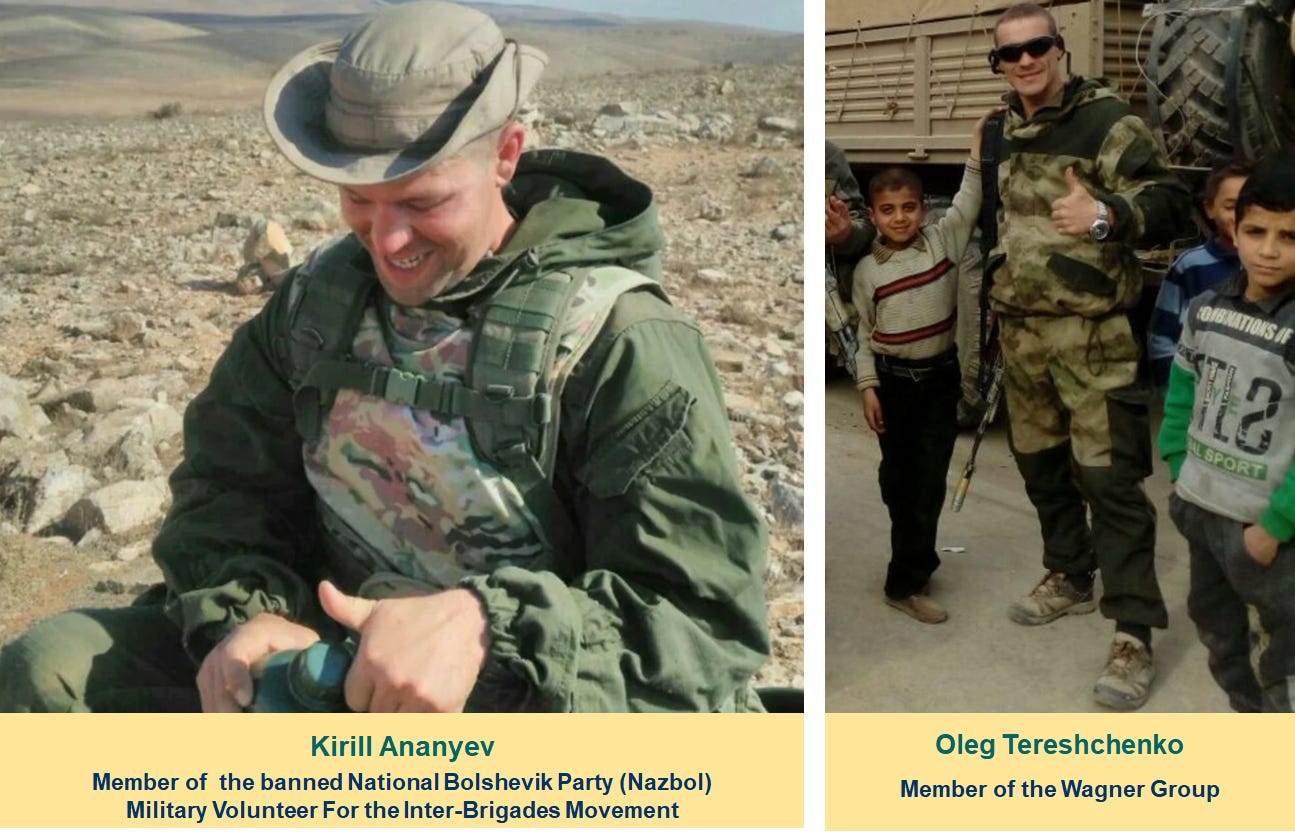
The culmination of these tensions between Wagner and Russian MOD was the failure of Russian aerospace forces to intervene when the Americans started conducting aerial strikes that killed many Wagner fighters. Before US jet fighters began the attack, The Americans had actually asked the Russian military via the special deconfliction phone line if regular Russian troops were in the vicinity about to be attacked. When the Russian military said “no”, the US military aircraft swooped down and attacked.
SIDE BAR: TENSIONS BETWEEN RUSSIAN MOD AND WAGNER IN SYRIA
The tensions between Prigozhin’s Wagner Group and Russian MOD did not start in Ukraine in 2022. It was there in Syria, boiling below the surface.
Syria was the first foreign country to sign a contract with Prigozhin’s mercenary outfit with quiet encouragement from the Kremlin. However, Prigozhin and his Wagner mercenaries were not open to obeying every instruction of the Russian MOD in the Levantine country.
In Syria, the Russian MOD moved cautiously in deference to the Americans occupying parts of Northern Syria and in deference to the Israelis who sporadically used their jet fighters to launch attacks at Syria under the pretext of fighting “Iranian influence” or the use of Syria as a site for transferring Iranian weaponry to Lebanese Hezbollah.
Despite being immensely grateful to Russia, the Syrians were often dismayed by the Kremlin’s frequent agreements with the Americans to a ceasefire whenever the CIA-backed Jihadi proxies were on the verge of defeat. The Syrians were also dismayed by the reluctance of Russian MOD to use its planes to cover a planned assault on Conoco Petroleum Fields in Deir ez-Zor Governorate to remove the Kurdish-dominated Syrian Democratic Forces (SDF) and allied American troops occupying it.
Prigozhin and his Wagner fighters were also disappointed. The mercenaries had been fighting on the ground alongside the Syrian military forces shortly after Wagner came into existence in 2014. A large chunk of individual ex-Russian soldiers who came to Syria in 2013 as mercenaries had joined Wagner Group as soon as it became available. These mercenaries shared the frustrations of the Syrians at what looked to them like dithering on the part of the Kremlin/Russian MOD.
On 7 February 2018, Wagner mercenaries, and small numbers of Russian fighters belonging to other private mercenary outfits, ignored all the objections raised by the Russian MOD and joined the Syrian military forces in their planned assault on the Conoco Fields under American and SDF occupation.
There were also claims that the defiance of MOD warnings may be linked to an alleged new contract that the Syrian government had prepared, which stipulated that the Wagner Group would receive 25% of the profits from the sale of oil and gas once the petroleum fields were captured.
The Americans saw the Wagner convoy approaching the Conoco Fields and reached out to the Russian MOD through the deconfliction phone line. Once the US Department of Defence had confirmation that not a single regular Russian soldier was present among the mercenaries, the aerial attack began.
American helicopters, combat drones and jet fighters dropped bombs and fired missiles at Russian mercenaries and their Syrian military allies. Shortly after the aerial attack began, American ground-based artillery joined in, firing loads of shells. A lot of Wagner and allied Syrian troops were either killed or wounded.
On Euro-American media outlets, minions of the Trump Administration boasted that the US Air force had killed “hundreds of Russian troops”— a false claim used to create the impression that Trump was being tough on the Kremlin by killing Russian regular troops.
Although media propagandists ran with the fake story, they still considered Trump their enemy and so the peddling of the Russiagate Hoax continued unabated.
So, what was the Kremlin’s reaction to the bombing of several Russian citizens in Syria? On 8 February 2018, twenty-four hours after the US aerial attack, Russian foreign ministry spokeswoman, Maria Zakharova, did a press briefing. She did not mention the US air strikes at all; only a boiler-plate statement that US occupation of Syria was illegal.
That same day, Russian Ambassador to the United Nations, Mr. Vasily Nebenzya, condemned the air strikes as “regrettable” and claimed that “no Russians were in the area attacked by the Americans”. Twelve days later, on 20 February 2018, the Russian foreign ministry would reverse itself by admitting that citizens of both Russia and other countries formerly part of USSR were killed in the aerial attack.
For its part, the Syrian Government was furious and condemned the US aerial attack as a “war crime”, a “brutal massacre,” and a “crime against humanity”. The allied Iranian government also issued statements in the same vein.
Within Russia, it is widely believed that the Russian MOD deliberately allowed the Russian mercenaries to be killed by the Americans as a lesson to Prigozhin.
Gerasimov is said to have prohibited the regular Russian military leadership in Syria from sending their own planes to dissuade the Americans from launching the aerial attack. He even went as far as banning any attempt to forewarn Wagner troops about the impending US aerial attack.
That, of course, begs the question— if the Wagner Group was really a front for the MOD and a significant portion of its personnel were actually active-duty GRU military intelligence officers posing as “mercenaries”, then why would Gerasimov stand by and allow the Americans to launch an attack that killed so many?
WAGNER OPERATIONS IN AFRICAN COUNTRIES:
I have taken the time to produce a map showing countries where the Wagner Group is confirmed to have been active and countries where the Euro-American corporate media claims—without strong proof— that Wagner Group is “secretly” active.
While this section of the article will mostly discuss those countries where the Wagner Group is confirmed to be active, I will try to address some of the media claims about “secret deployment” of mercenaries elsewhere.
(a) Central African Republic
Contrary to what many think, Kremlin does not directly deploy Wagner to friendly nations that request Russian military assistance. What actually happens is that a friendly nation asks Kremlin for Russian troops. Putin responds by recommending the Wagner Group. Then that foreign nation begins to deal directly with Prigozhin. The Kremlin only steps in from time to time to make sure that all is going well.
Wagner’s appearance in a foreign country is usually preceded by the award of a paid contract to Yevgeny Prigozhin. As stated earlier in this article, some countries (in Africa) pay for the contract not with cash, but with generous awards of mining concessions.
Syria was the first foreign country to sign a paid contract with Prigozhin's mercenary outfit. Despite not getting along with Shoigu and Gerasimov, most of the weaponry used by Prigozhin’s mercenaries in the Levantine state was directly supplied by the Russian MOD at the behest of the Kremlin.
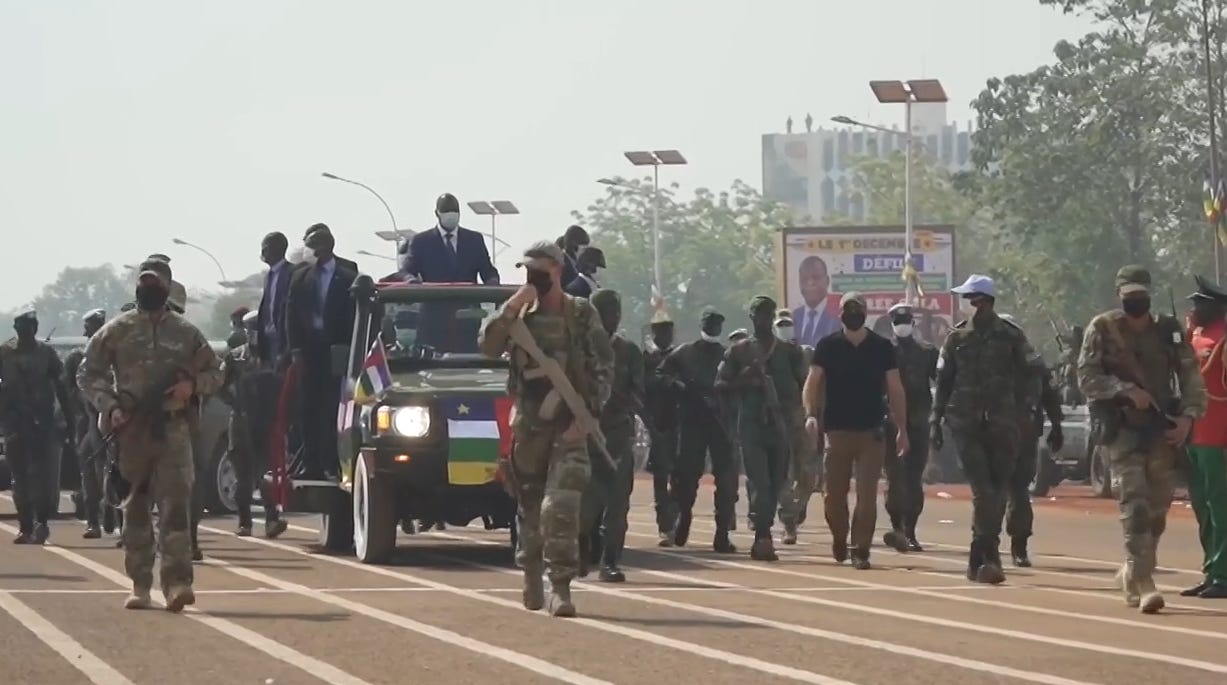
Having seen how effective Wagner Group was in Syria, the Kremlin encouraged the government of the Central African Republic (C.A.R) to sign a contract with Prigozhin in March 2018. The C.A.R government had been requesting for large-scale Russian military assistance since 2013, but the Kremlin had been reluctant to commit regular Russian forces to such a far flung part of the world.
SIDE BAR: ABOUT THE CENTRAL AFRICA REPUBLIC (C.A.R)
Central African Republic is a small landlocked francophone nation of 5.6 million citizens located in the Central African sub-region. Even by the standards of that particular sub-region, it is extremely poor, especially when compared to the much better-run Central African states of Gabon and (post-genocide) Rwanda.
Just like in other ex-French colonies of Africa, France has repeatedly interfered in the domestic politics of Central African Republic by supporting and removing the country’s leaders. The most “famous” example was the September 1979 overthrow of the admittedly unpopular C.A.R ruler Jean-Bédel Bokassa by French paratroopers sent by Valéry Giscard d'Estaing, the President of France at the time.
Despite all of this, diplomatic relations between France and the Central African Republic have managed to remain relatively normal. This is in contrast to the visceral anti-French sentiments sweeping French-speaking West African states such as Burkina Faso and Mali.
When the insurgents from the minority Muslim community of the predominantly Christian Central African Republic kicked off the civil war in December 2012, Francois Bozize— President of C.A.R at the time—immediately appealed for French military assistance.
French President François Hollande was not too enthusiastic about sending troops there. French interest in C.A.R had waned over the years. France voluntarily closed its sole military base in the country in 1998 while simultaneously strengthening its military bases in other African countries where it still had stronger interests— Gabon, Ivory Coast, Senegal, Djibouti, Burkina Faso and Mali. The last two countries, Mali and Burkina Faso, would later demand that France close its military bases in 2022 and 2023, respectively.
While Hollande was still weighing the request of C.A.R, the Muslim insurgents captured and sacked the capital city of Bangui on 15 March 2013, forcing President Francois Bozize to abandon his post and flee the country. A faction of the rebel coalition installed Michel Djotodia as the first Muslim President of Central Africa Republic. But that did not end the war.
The insurgents soon began to plunder villages, cities and towns, killing many people, mostly Christians and anybody perceived to have supported the ousted Bozize government. A pro-Christian militia soon sprang up to fight the Muslim insurgents. The Djotodia government not only lost control of the rebel fighters who had installed it in power, it also lost control of most of the country.
France finally responded to calls for help from C.A.R in December 2013—exactly one year after the civil war broke out. As France had no military bases in Central African Republic, French President Hollande had to send troops and armoured vehicles directly from France to Cameroon, which shares its eastern border with C.A.R. From Cameroon, French troops crossed into C.A.R. These French interventionist troops in C.A.R would later be reinforced by overseas French soldiers permanently stationed in the French military base in Gabon.

French military intervention will last three years (2013—2016) during which the number of French troops increased from an initial 1,600 men to 2,000 men. The French troops were able to restore a measure of security within the C.A.R capital city of Bangui, although elsewhere in the African country, the civil war raged unabated. Three French soldiers died in clashes with Muslim rebels.
In October 2016, Hollande declared “victory” and began to voluntarily withdraw French troops from Central African Republic. In interviews, he stentoriously claimed that France had succeeded in stopping violence in the African country despite the fact that the civil war was still raging.
A United Nations Peacekeeping force of 14,535 soldiers drawn from several countries has been in existence in Central African Republic since April 2014, but it has not really been as effective and aggressive in fighting the Muslim insurgents as the Wagner mercenaries who arrived in 2018.
Before Prigozhin and his men came into the picture, the government of Central African Republic (C.A.R) was in dire straits. Since France voluntarily ended its three-year-long military intervention and pulled out its troops in October 2016, the rebels had steadily made sweeping territorial gains across the country. Faustin-Archange Touadéra, elected in March 2016, desperately asked Russia for help.
The typically risk-averse Putin responded by sending a paltry five-man regular Russian military advisory team led by Valery Zakharov to teach strategy and tactics to the highly incompetent C.A.R government forces. But that was not enough to stop the rebels from increasing the size of territory under their control.
By early 2018, the Muslim insurgents were in control of 75% of the total landmass of the Central African Republic.
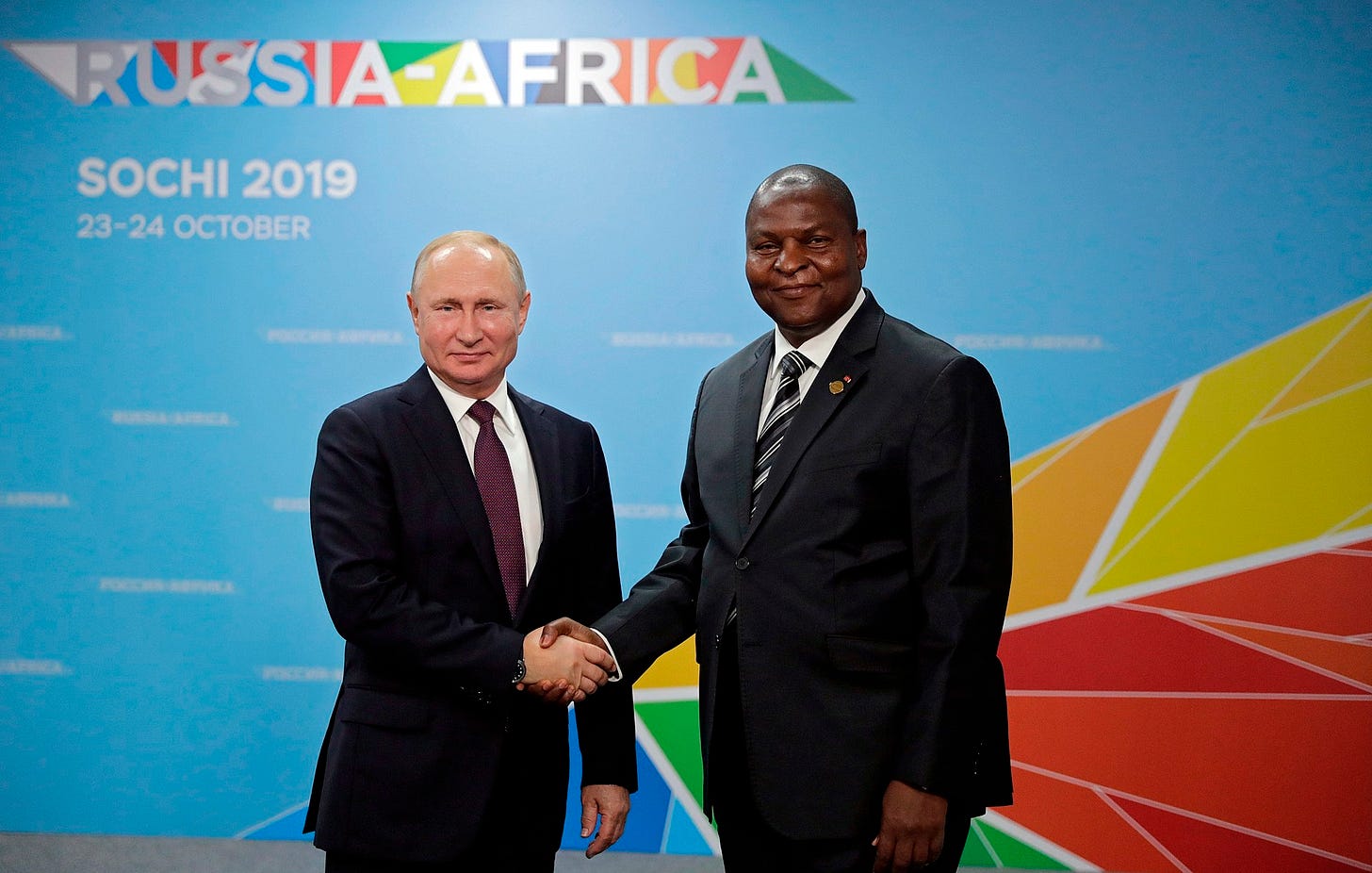
After Syria, the Central African Republic was the second country to sign a contract with Prigozhin’s Wagner Group in January 2018. Rumour has it that a lucrative diamond mining concession was the price that the Touadéra government paid to get Wagner mercenaries into the country.
Wagner’s appearance in government-controlled parts of Central African Republic on 24 March 2018 proved to be a turning point in a war that President Touadéra’s troops were losing massively. Prigozhin flew military equipment and Russian mercenaries, all hardened ex-servicemen, to the African country with his private aeroplane. It didn't take long for the counterinsurgency efforts to bear fruit.
The Wagner Group not only reclaimed vast stretches of territory for the C.A.R government, it was also able to secure the surrender of large numbers of the rebels. Wagner was even able to recruit the more moderate ones to serve as its auxiliaries in the war against the remaining diehard rebels.

Western governments and their corporate media allies have made several allegations of human rights abuses against the Wagner Group, but I have no way of knowing if any of these claims are really true or just the usual anti-Russian propaganda. All I can say is that the local citizens of C.A.R were so grateful for the presence of the mercenaries that they built a concrete monument to celebrate their successful counterinsurgency efforts.
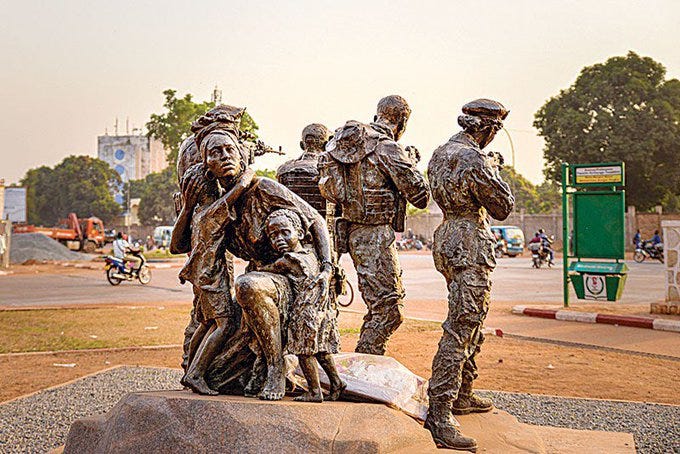
The French government has since terminated all humanitarian aid to the C.A.R because of its refusal to expel the Wagner Group. The United States government also offered to provide training to local C.A.R troops if Wagner mercenaries were expelled. The government of C.A.R rejected the offer.
Meanwhile, it seems like Putin eventually had a change of heart about deploying large numbers of regular Russian soldiers to far flung Africa. Maybe, it was the successful large-scale intervention in Syria that encouraged him to steadily increase regular troop contingent in Central Africa Republic.
The number of regular Russian troops serving as military advisors in C.A.R grew from an initial five-man team to 175 troops by the end of 2018. By December 2020, the number of military advisors had expanded to 535 troops. In July 2021, Foreign Minister Sergei Lavrov announced that Russia will add another 600 troops. That brought the total number of military advisors to 1,135 men.

Unlike the 1,200-strong Wagner Group, the Russian military advisors have no frontline combat roles. They serve in the rear of the battlefront, where they are tasked with training the army, police and national gendarmerie of the Central African republic.
(b) MALI
Seeing the successes of the Wagner Group in Central African Republic, Mali signed a contract with Prigozhin. The west African country was battling al-Qaeda terrorist insurgents armed with weapons donated by Libyan jihadist rebels who had earlier used them in overthrowing the Gaddafi government.
As I mentioned in a previous article, many of the weapons were originally air-dropped to the Libyan jihadists by NATO countries sponsoring the civil war in the North African country. The governments of Sarkozy, Cameron and Obama were at the vanguard of these weapon air-drops despite repeated warnings from African Union (AU) officials that these weapons will eventually destabilize those parts of West Africa that lie on the Sahel Belt.

Predictably, at the end of that NATO-induced civil war, the weapons travelled freely from Libya to Algeria and then on to Mali, where it turbocharged an Islamist insurgency, which then compelled the government of Mali and Tuareg secessionist rebels to suspend their decades-long separate conflict and band together in the fight against the al-Qaeda intruders.
France pledged to defeat the al-Qaeda insurgents and organized a multinational European military force consisting of French, British, Estonian, Swedish and Danish troops. For a time, they seemed to be making minor progress against the terrorists. Things began to unravel after the overthrow of the democratically elected President Ibrahim Boubacar Keïta who was friendly towards France to an extent that displeased many ordinary Malians. The Keita government was replaced by an anti-French nationalist military junta on 24 May 2021.

Frustrated by the failure of a French-led multinational European military force to rout the al-Qaeda fighters, the military junta ruling Mali signed a contract with Prigozhin in December 2021. Once the Wagner troops began to show success on the battlefield against the jihadists, the military government of Mali asked the French-led European force to leave the country by March 2022.
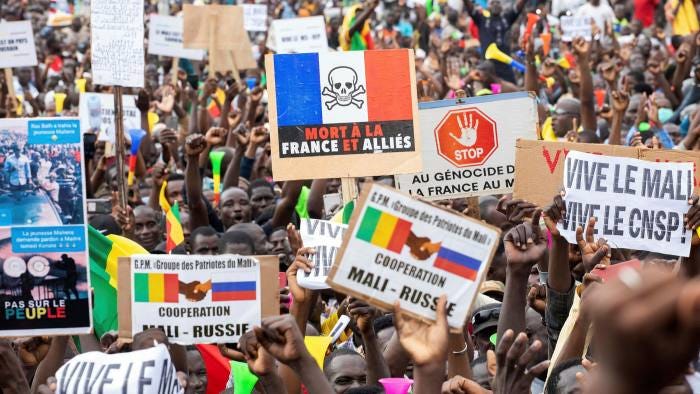
In July 2022, the military government of Mali expelled all overseas French troops permanently stationed in the country and closed all three of their military bases. Macron retaliated by withdrawing “donor aid”. The government of Mali responded by banning all French-funded non-governmental organizations from its territory.
Despite warnings, laced with threats of sanctions, from the US government to African nations not buy anything, other than food, from Russia, the government of Mali bought Russian military aircraft. I wrote about this back in August 2022 and provided the above video of government officials and senior military officers of Mali inspecting the helicopters and fixed wing aircraft delivered by Russia to Modibo Keita International Airport in the Malian capital city of Bamako (click here for the August 2022 article).
(c) BURKINA FASO
Just like Mali, neighbouring Burkina Faso has a long history of political instability. Burkina Faso has seen three different national governments in the space of eight months.
On 24 January 2022, the democratically elected Burkinabe government of Roch Marc Christian Kaboré was overthrown. Parliament and all civilian governmental institutions were dissolved as is customary after successful coup d’etats. President Kaboré's elected government was replaced by the virulently anti-French military dictatorship of then 42-year-old Lieutenant-Colonel Paul-Henri Sandaogo Damiba.
After eight months in power, the Damiba-led military regime was overthrown on 30 September 2022 and replaced by another anti-French military junta led by 34-year-old Captain Ibrahim Traoré.
Compared to Mali, anti-French sentiments in Bukina Faso have always been more visceral as many Burkinabes firmly believe that the French government of Francois Mitterand was indirectly involved in the overthrow and assassination of Captain Thomas Sankara, the extremely popular military ruler of Burkina Faso who ran the country from 1983 until his murder in 1987. He had made the mistake of challenging the neocolonial La Françafrique system set up in the early 1960s by the French colossus, General Charles de Gaulle, to keep France in charge of its nominally independent ex-colonies in Africa. Indeed, the coup plotters had stated publicly that one of the reasons for Sankara’s overthrow was his damaging of relations with France.
SIDE BAR: THOMAS SANKARA (1949—1987)
Thomas Sankara remains extremely popular in Burkina Faso today despite being dead for 36 years. He had come to power in a military coup on 4 August 1983. Under his rule, the name of the country was changed from the French given name of République de Haute-Volta (Republic of Upper Volta) to “Burkina Faso” which translates to “Land of Incorruptible People”.
Under his rule, he withdrew Burkina Faso’s membership of the World Bank and International Monetary Fund (IMF). His government implemented policies which it believed will lead to agrarian self-sufficiency. He carried out land reform and suspended rural poll taxes.
He also focused on a nationwide literacy campaign and vaccinating programme against meningitis, yellow fever and measles. His government also focused on building schools, health centres, water reservoirs, and infrastructure construction projects. He also fought creeping desertification of the Sahel by planting over 10 million trees. Moreover, he outlawed female genital mutilation, forced marriages and polygamy.
These policies endeared him to most of the populace despite being a Christian minority in a country that was 63.8% Muslim. However, his policies and his socialist beliefs also alienated him from former members of the local ruling class who had been part of the neocolonial “La Françafrique” system. It goes without saying that his relations with France was incredibly rocky. He had upset Paris by uprooting the local comprador elites who had ruled Burkina Faso in accordance with its diktat. As a result of Sankara’s constant criticism of France, President Francois Mitterrand dropped “donor aid” to Burkina Faso by 80%.
His alliance with Cuba— which had accepted 600 young Burkinabes for training as doctors, agronomists and engineers—angered the United States government of Ronald Reagan. After Sankara strongly criticized US invasion of Grenada in October 1983, the United States implemented trade sanctions against Burkina Faso.
One year before his assassination in a coup d’etat, in November 1986, Sankara had publicly humiliated French President Francois Mitterrand who was on a state visit to Burkina Faso. Sankara made a fiery speech blasting the visiting French leader for welcoming to Paris the apartheid South African leader Pieter Botha and American-backed Angolan rebel warlord Jonas Savimbi. Sankara had told Mitterrand that both Botha and Savimbi were “covered from head to toe in blood”.
During his lifetime, Sankara was subject to a media campaign of calumny organized by the Mitterrand government in collaboration with DGSE, the French Intelligence Service as revealed in a paywalled article printed in October 2021 by French monthly newspaper, Le Monde diplomatique. The campaign of calumny tried to portray the popular African leader as “human rights abuser who commits atrocities.”
International “human rights” organizations also criticized Sankara for setting up “revolutionary tribunals” that tried people for tax evasion, corruption and “counter-revolutionary” activities.
Sankara was murdered on 15 October 1987 by soldiers loyal to Burkinabe Army Captain Blaise Compaoré who accused him of “damaging relations with France” and “shattering the economy” by refusing aid from World Bank and IMF.
After 27 years in power, Compaoré would be forced to dissolve his pro-French authoritarian regime and flee Burkina Faso after a week of mass demonstrations by ordinary citizens in the last quarter of 2014.
SIDE BAR: LA FRANCAFRIQUE
For those readers interested in gaining some understanding of the neocolonial Françafrique system devised by General Charles De Gaulle in the late 1950s and early 1960s, I will encourage you to read two old articles of mine linked here and there. If you want to get granular details of how France operates this system, I will also encourage you to read my feature article on Omar Bongo, the former President of Gabon.
Anti-French demonstrations, both peaceful and violent, are a part of life in Burkina Faso, and have a much longer history than in other Francophone African countries where France's insistence on domination and control has provoked widespread resentment. In October 2022, anti-French protesters set fire to consular offices belonging to the French Embassy as I reported at the time in this linked article.
The video below shows Burkinabes engaging in their “favourite” past time against property owned by the French government:
As I have often stated, pro-Russian sentiment in most Francophone African countries have more to do with anger aimed at France than it does love for the Russian Federation.
Here is another video showing Russia racking up support among Burkinabes without even trying too hard, and even before Wagner showed up in their country:
Again, I would like to stress that in most of these Francophone African countries, it is mostly anger against France that drives these “pro-Russian sentiments”, which is mostly absent in Anglophone Africa except for South Africa, Zimbabwe and Namibia.
Unlike the rest of Anglophone Africa, which is mostly ambivalent towards Russia, there is genuine affection for the Orthodox Slavic country in South Africa, Zimbabwe and Namibia because the black African inhabitants in all three nations feel a depth of gratitude to the Soviet Union for providing them with diplomatic and military support in their fight against local white segregationist regimes, which had denied them their rights. In these three Anglophone African countries, the Russian Federation is an inheritor of pro-Soviet affections.

On 2 January 2023, the French Ambassador to Burkina Faso, Monsieur Luc Hallade, was suddenly expelled from the African country without any reason given for such a dramatic action. That same month, Burkina Faso sent a written request to President Emmanuel Macron to pull out all his troops and wind down French military bases in the country. When Macron reluctantly complied, some Burkinabes waving Russian flags turned out to jeer French soldiers as they pulled out of the West African country.
Watch the video below:
In reaction to all these setbacks, Macron has taken to blaming the Kremlin for its misfortune in its ex-colonies, claiming that Russian influence on the continent of Africa is “predatory”. The French media seems to agree. I have read a couple of silly articles published by the Parisian media claiming that Russians are “brainwashing Africans and turning them against the French.”
It so hilarious when journalists in denial refuse to acknowledge the real reason why France is getting so much hate in Francophone Africa while the same isn’t happening to other NATO countries. There are no rallies in Francophone Africa against the United States of America or the United Kingdom.
Besides, if Russians were so powerful in the business of “brainwashing Africans”, why is France receiving ZERO hostility in Anglophone Africa? Could it be that resentment and anger in Francophone Africa has something to do with the domineering behaviour of France over there?
The only kernel of truth in French media commentary is the rapid growth of Russian footprint in parts of Francophone Africa.
Even before French assets—the ambassador and the troops— were kicked out of Burkina Faso, there has been strong rumours that the Traoré-led military junta was seeking to emulate its northern neighbour (i.e. Mali) by signing a contract with the Wagner Group to re-train its forces and help fight al-Qaeda and ISIS-aligned Islamic terrorists. Many of these terrorists had entered Burkina Faso from Mali where a similar jihadist insurgency is raging.
Despite frequent public denials, the Traoré junta is said to have secretly signed a contract with Prigozhin in late 2022, and this only came to light when Burkina Faso’s southern neighbour—the anglophone Republic of Ghana—expressed public concerns about a mercenary force operating so close to its international frontier.

The elected Ghanaian President Nana Akuffo-Addo had brought up the matter during a meeting with US Secretary of State Anthony Blinken at the sidelines of US-Africa Leadership Summit in December 2022. The Ghanaian leader also claimed that Burkina Faso had offered Prigozhin a gold mining concession in exchange for the services of his Wagner Group. The Traoré junta responded to Nana Akuffo-Addo's comments in USA by summoning the Ghanaian Ambassador to Burkina Faso for a dressing down.
While Burkina Faso officially continues to deny any plans to hire the Wagner Group, Mr. Mamadou Drabo, executive secretary of “Save Burkina” has said that “Russian instructors” have been invited to train Burkinabe soldiers. Drabo is known to be close to the ruling military junta.
Since news broke of the planned deployment of Russian mercenaries as “instructors” in Burkina Faso, the usual accusations in the Euro-American media of “Wagner massacring the civilians” have resurfaced. The same generic allegations made against Wagner in Central Africa Republic (C.A.R) and Mali.
Well, I don't live in any of the countries hosting Wagner personnel. So, I cannot confirm the truthfulness of these allegations. Nevertheless, I would venture an opinion on the matter. There is an active wall-to-wall propaganda war against the Russian Federal State and all entities associated with it, including the Wagner Group, which is often seen as a Kremlin tool of foreign policy.
Therefore, all information about Wagner emanating from the governments, media organs and think-tanks of NATO countries should be treated with a level of skepticism. I will quickly remind my readers that these same NATO countries and their media organs once promoted head-chopping jihadist extremists in Syria as “moderate rebels” and hailed atavistic al-Qaeda fighters in Libya as “democracy-seeking freedom fighters”.
It is probable that many human right violations against civilians did occur in the conduct of Wagner’s military operations against terrorist insurgents in Mali and Central African Republic, but allegations of “genocide” and “massacres” against the mercenaries are most likely false. I have also noticed a pattern of blaming Wagner Group for acts committed by local soldiers belonging to the official army of the host African country or rebel fighters who defected to Wagner’s side.
I find it difficult to take these media allegations of “Wagner atrocities” seriously when large numbers of ordinary people in Central African Republic, Burkina Faso and Mali keep turning up in street rallies to wave Russian flags and engage in their “favourite” past time of denouncing France. The Wagner Group is seen by attendees of those rallies as an embodiment of Russian military presence in their country. In other words, the local people in these African countries make no distinction between the Russian Federal State and mercenaries of the Wagner Group.
If Wagner troops were indeed busy committing “massacres” or “genocide”, I am confident that demonstrations against Russia will flare up across Mali, Burkina Faso and C.A.R. But that is not happening. All indications are that the locals seem to be absolutely fine with the counterinsurgency work of Wagner mercenaries, notwithstanding reports churned out by “human rights” organizations, NATO-aligned think-tanks and their corporate media allies. I would also add those African media outlets that simply “copy” and “paste” reports written by Euro-American press news agencies such as Reuters, Agence France-Presse (AFP) and Associated Press (AP).
(d) SUDAN
Compared to its operations in Mali and the C.A.R, Wagner’s footprint elsewhere in Africa is relatively much smaller. Wagner was briefly present in Sudan where it ran a training programme that transformed the Rapid Support Force (RSF) from an irregular rag-tag militia of lightly armed men on horseback into a powerful professional paramilitary organization capable of operating armoured tanks, howitzers and helicopter gunships. The RSF is currently engaged in a shooting war with the Sudanese armed forces, which had always opposed its existence as an independent entity and is now trying to forcibly absorb it.
For more on the Sudanese situation, read the substack article below:
A PROPER AND DEEPER ANALYSIS OF THE CLASH IN SUDAN
Certain publications have been alleged that the Sudanese conflict was instigate the Americans because they are annoyed with the Sudanese military regime for negotiating a deal that will allow Russia to site a military base near the African country’s Red Sea Coast.
(e) LIBYA
After the collapse of Libya’s statehood in the aftermath of Gaddafi’s death, the North African country was de facto partitioned by two warring sides claiming to be the legitimate national government. On one side, you had an Islamist-tinged regime, which controlled the capital city of Tripoli and the western part of Libya. On other side, you had east and central parts of Libya under the control of Field Marshal Khalifa Haftar.
During the existence of the Great Socialist People’s Libyan Arab Republic, Khalifa had been an army general until he was imprisoned in 1990 for trying to overthrow Gaddafi. Being a valuable CIA asset, US President George Hebert Bush negotiated and secured the release of Khalifa who was then flown to USA and given a place to live in Langley, Virginia. He would live there for several years until his services was required again during the NATO-induced Libyan Civil War of 2011, which ended with the overthrow of Gaddafi and the demise of his Socialist republic.
In October 2018, Wagner mercenaries made an appearance in Libya on the side of Marshal Khalifa Haftar’s military forces. There are claims that Prigozhin had been paid by the United Arab Emirates (UAE), which backs Khalifa Haftar’s ambition to take complete control of Libya after the defeat of his Islamist enemies based in Tripoli.
Wagner mercenaries in Libya have frontline combat roles as snipers and fighters as well as roles as trainers of Khalifa’s troops. Predictably, the generic corporate media allegations of “Wagner massacring the civilians” have surfaced in Libya as well. While I am never going to argue that these Russian mercenaries could never commit human right abuses, I’ll reiterate my opinion that any report that comes from the governments, media and think-tanks of NATO countries should be treated with skepticism.
(f) MOZAMBIQUE:
Contrary to what many think, the entire African continent is not rich in mineral resources. What I mean is that natural resources are not evenly distributed across the landmass of the continent. In other words, some African countries are indeed rich in mineral resources while several others are resource-poor, meaning they have little or nothing that can be extracted from the depths of the earth in commercial quantities to sell in the global market.
Among those African nations lucky to have any kind of mineral resource, only a fraction of them are rich in petroleum, which, as far as I am concerned, is the most important natural resource. For decades, African countries like Angola, Nigeria, Egypt, Algeria, Sudan, Libya, Gabon, Equatorial Guinea and Congo Republic (not to be confused with Democratic Republic of Congo) have enjoyed the privilege of having petroleum resources needed to keep their economies running. However, in recent times, a few countries, Uganda, Sao Tome & Principe, Ghana, Tanzania, Kenya and Mozambique, have joined the exclusive club of nations with commercially viable petroleum reserves.
In the case of Mozambique, the joy and excitement of discovering one of the largest reserves of natural gas in the world (4,200 billion cubic metres) in October 2011 has since been overshadowed by a jihadist insurgency which broke out in October 2017.
Going back to history, Mozambique is not a stranger to war. Like other Portuguese-speaking colonies, Mozambicans had to pick up weapons in September 1964 to fight the Portuguese who rejected the idea of granting independence to any of its colonies. In so doing, the Mozambicans were emulating the Indians who used military force to separate Portugal from its South Asian Colony of Goa in December 1961.
After fourteen years of brutal warfare (1961-1975) in the African colonies of Angola, Mozambique, Cape Verde Islands and Guinea-Bissau, the Portuguese government gave up and pulled out.
With the Portuguese gone, a pro-Soviet government took power in Mozambique and officially declared independence on 25 June 1975. It didn’t take long for the Americans to covertly team up with apartheid South Africa and Rhodesia to prop up “rebel groups” to fight the newly established state, triggering the Mozambican Civil War (1977-1992).
With the fall of communism across Eastern Europe and the demise of the Soviet Union, the US government lost interest in supplying its proxy rebel groups fighting on the African continent, so the civil war in Mozambique came to a formal end on 4 October 1992.
Between 1992 to 2017, Mozambique was relatively peaceful, but quite poor and bereft of infrastructure due to the decade lost to continuous warfare. The discovery of huge quantities of natural gas in the waters adjacent the northern coastal province of Cabo Delgado in 2011 was a big boon to a country that did make a fair amount of money from solid mineral resources such as aluminium, beryllium, and tantalum.
With the war in Ukraine, and the destruction of the Nord Stream pipeline, Europe has been increasingly turning to African countries to supply natural gas. Mozambique is one of such countries as I wrote in a September 2022 article. However, an Islamist insurgency has thwarted efforts to develop the natural gas fields, which is in the northernmost part of the country where most of the Muslim minority reside. Followers of Islam constitute 19% of the total population. The remainder are mostly Christians.
As a result of the activities of ISIS-linked jihadists, construction work on some of the Liquefied Natural Gas (LNG) facilities had to be suspended. After the Mozambican Armed Forces folded like a lawn chair in the face of Islamist firepower, the government began to look for outside military help. Between 2017 and 2021, a couple of mercenary outfits were contacted, many of them owned by former white soldiers of apartheid South Africa. For one reason or another, it seems Mozambique was unable to meet the payment requirements of the South African mercenary companies.
According to claims made in the Euro-American corporate media, it seems that the South African companies were asking for $15,000–$25,000 per individual mercenary per month, which the Mozambicans were reluctant to pay. The media alleges that on the recommendation of the Kremlin, the Mozambican government contacted Prigozhin who agreed to $1,800–$4,700 per mercenary per month.
One of the earliest corporate media outlets to make the claim about Wagner deployment in Mozambique was the Times of London newspaper on 2 October 2019 :
Apparently, Prigozhin’s military adventure in the jungles of Carbo Delgado Province was only brief. It allegedly lasted from August to November 2019. According to the media, the 200 Wagner mercenaries “struggled to cope with bush warfare”. After a couple of failed counterinsurgency operations, the Wagner mercenaries allegedly quarrelled with the Mozambican army and refused to run joint patrols with them. After four months, Prigozhin pulled out his mercenaries and Wagner’s adventure in Mozambique became history. Of course, not all media outlets agree that Prigozhin pulled out his men in November 2019. In early 2020, there were still journalists claiming that Wagner remains “secretly deployed” in Mozambique, citing the presence of Russian-made military machines such as helicopter gunships.
On a personal level, I see no conclusive proof that Wagner mercenaries were ever deployed in Mozambique. But there is plenty of evidence that the Kremlin supplied a lot of military equipment to the Mozambican armed forces starting from January 2017. There is also proof that between 2019 and 2021, middle-aged white-African soldiers of the defunct Rhodesian State and apartheid South Africa fought the Mozambican jihadists as paid mercenaries. I say all of this, notwithstanding media allegations that resource-rich Mozambique could not “afford” to pay them.
In mid-July 2021, professional troops of Rwandan Defence Forces (RDF) were deployed to Mozambique. Having participated in several wars including the Uganda-Tanzania War (1978-1979), Ugandan Bush War (1980-1986), Rwandan Civil War (1990-1994), First Congo War (1996–1997), Second Congo War (1998-2003) and the Eastern Congo offensive (2009), the soldiers of the Rwandan Defence Forces (RDF) are one of the most battle-hardened on the continent.
SIDE BAR: RWANDAN DEFENCE FORCES (RDF)
Many of the senior officers of the RDF had grown up in the refugee camps of neighbouring Uganda after the massacres of Tutsis during the Rwandan Revolution (1959-1961), which presaged the creation of the French-speaking Republic of Rwanda.
As grown adults, many of these former Rwandan Tutsi child refugees would later participate in the wars involving Uganda and eventually join the post-war Ugandan armed forces. Some of them would even rise to become senior officers in Uganda’s military.
Two examples of such refugees are the late Major-General Fred Rwigyema who rose to the level of Deputy Defence minister in Uganda, and Colonel Paul Kagame, who served as head of Ugandan Military Intelligence. Both men would eventually be demoted by the Ugandan government following widespread criticism by native Ugandan soldiers opposed to Rwandan foreigners occupying senior positions in their country’s armed forces.
Longing to return to their home country, Rwanda, thousands of these Tutsi refugees— including Fred and Paul—would desert the Ugandan Army on 1 October 1990 and cross the international border, sparking the Rwandan Civil War. The war would eventually result in the 1994 genocide of thousands of Tutsis still living as second-class citizens within the borders of what was then a Hutu-ruled country.
After the defeat and overthrow of the genocidal Hutu regime by Tutsi-dominated military forces (now known as the RDF), a new post-war government rebuilt the country from scratch. Today, despite still having a lot of poverty within its borders, post-genocide Rwanda is one of the best run countries on the continent. Corruption is extremely low; the local police force is professional; there is a national healthcare system; and the cities and towns are very clean.
The deployment of 1,000 RDF troops in 2021 has vastly improved the security situation in northern parts of Mozambique as the jihadist rebels have been pushed back by Rwandan firepower. Many towns and districts of the Cabo Delgado Province have been recaptured from the terrorists, allowing thousands of displaced people to return home. Since their arrival, the Rwandans have earned the respect of ordinary Mozambicans— way ahead of the Mozambican Army, which has been reduced to playing the role of an auxiliary force to the RDF.
A video reporting the successful counterinsurgency work of the Rwandan troops in Mozambican province of Cabo Delgado:
Another video reporting female Rwandan soldiers working alongside their male counterparts in patrolling the waters of Cabo Delgado in small boats:
Despite, the successes being racked up by RDF troops, the media chatter about the “possible return of Wagner to Mozambique” has not completely ceased. I am not even sure that these Russian mercenaries were ever present in the first place as claimed by the Times of London newspaper, four years ago.
(g) OTHER AFRICAN STATES ALLEGED TO BE HOSTING WAGNER
Having spent a bit of time examining Euro-American media claims of Wagner presence in certain African countries, I have come to the firm conclusion that some journalists attached to these media outlets are no better than those eccentric Americans who periodically report sightings of the long dead singer, Elvis Presley, or the mythical creature, Bigfoot.
I have seen no real evidence for media claims of “secret Wagner presence” in Algeria, Cameroon, Chad, Eritrea, Madagascar, Zimbabwe, South Sudan and the Democratic Republic of Congo (D.R.C).
In the case of the D.R.C, the media switched its claim from “secret presence of Wagner troops in the country” to “possible plans to bring Wagner troops into the country”. US Secretary of State, Tony Blinken, was so worried by these media claims that he flew to D.R.C in August 2022 to warn the local authorities not to hire the Wagner Group to help fight a plethora of rebel groups operating in eastern half of the country.
Historically, the eastern region of the D.R.C has never been under the full control of the Congolese national state. The region has always been an anarchic zone crawling with various irregular military formations ranging from several home-grown Congolese rebel groups to exiled foreign rebel groups such as the Lord’s Resistance Army kicked out of its native Uganda and Democratic Forces for the Liberation of Rwanda, which is actually an amalgamation of the exiled military forces of the overthrown Rwandan Hutu government and the Interhamwe militia fighters, who spearheaded the 1994 Rwandan genocide. From rear bases in Eastern Congo, these foreign rebel groups launch cross-border raids into their native countries. For that reason, Ugandan and Rwandan troops regularly violate the sovereignty of the D.R.C by entering Eastern Congo without permission to fight those cross-border rebel groups.
Perhaps, understanding the desperation of the D.R.C government to find a solution to the Eastern Congo anarchy, Blinken did not stop at merely issuing threats of sanctions if the Wagner Group is hired, he recommended the hiring of the highly efficient Rwandan Defence Forces, which has an expeditionary army successfully fighting jihadists in Mozambique.
So far, it doesn't appear the government of the D.R.C has made any moves towards hiring the Wagner group, and Blinken’s recommendation to ask for Rwanda’s help in tackling the East Congo problem is a non-starter. The Congolese don't like Rwandans—and that is an understatement on my part.
THE WAGNER MUTINY IN RUSSIA AND ITS AFTERMATH
(I) THE MUTINY
I have heard various opinions about the nature of Prigozhin's mutiny, ranging from it being genuine to it being some convoluted psychological operation directed by the Kremlin.
Of all the opinions ventured so far, I find that of the individual who publishes under the alias of
to be the most plausible of the lot. However, I would like to add some of my thoughts to his own.I monitor Russian Telegram Channels to keep abreast of the tactical minutiae of the Russo-Ukraine conflict. And there, I often read or watched videos of masked Wagner fighters in the Bakhmut area saying that they wish to return to Africa where life was easier for them. Even Prigozhin himself once echoed these same sentiments.
On the African continent, desperate populations, besieged by jihadist terrorists, and failed by ineffective national militaries, have often welcomed the Wagner Group. The popularity of the mercenaries has grown since they began to prove their effectiveness by crushing terrorist insurgents and reclaiming vast swathes of territory that had been outside national government control for decades.
As I have already mentioned, citizens of the Central African Republic erected a collection of statues to celebrate the Wagner Group for helping them combat Islamist rebels. In Mali and Burkina Faso, citizens keep flying Russian flags despite shrill claims of NATO governments, think-tanks and their corporate media allies that “Russian mercenaries are massacring the civilians”.
Wagner Group’s support had reached levels in certain host African countries that some locals even signed up as auxiliaries to the mercenary outfit. More importantly, Prigozhin had a free hand to run his organization with zero interference from the Russian Ministry of Defence, and only minimal oversight from the Kremlin and the host African state.
So, try to imagine the deep resentment felt by Prigozhin and his men about their subjugation to the diktat of Russian military top brass inside the Ukrainian war theatre.
In the Bakhmut battlefront, the Wagner Group had to participate in the rationing of ammunition with other Russian military forces. It could not independently plan and execute its own style of operations as it did in African countries. The mercenaries were compelled to obey instructions of the Russian Defence Ministry— a military bureaucratic entity they did not particularly like or respect.
We all saw how Prigozhin went mad in Bakhmut, screeching that his men were not getting enough artillery shells, even though it was self-evident that Wagner mercenaries had all they required for the fight against Ukrainian forces.
So why did Prigozhin behave like that? Well, I will venture an opinion here by saying that his gripe wasn't really about whether the artillery munitions were sufficient or not. Prigozhin was irked by the fact that the Wagner Group could not get whatever it demanded as would have been the case in any African country where it was active.
If Wagner troops asked the desperate governments of Burkina Faso, Mali or Central Africa Republic to supply certain material to help the local counterinsurgency effort, they always got it without arguments.
Prigozhin and the loyalist core of his Wagner fighters could not adapt themselves to the centralized regime imposed on the various kinds of Russian forces active on the battlefields of Ukraine. It was just too different from their African experience.
In Ukraine, Prigozhin’s ability to independently run his private mercenary outfit was hindered by Gerasimov—the same man whom the Wagner Group CEO held personally responsible for allowing the Americans to slaughter his mercenary employees in Syria back in February 2018.
Attempts to absorb Wagner mercenaries into the regular Russian Army was the last straw. Hence, the revolt of Prigozhin and a faction of his men. According to certain reports, only 8000 out of a total of 32,000 mercenaries participated in the mutiny.
From certain quarters, I heard statements to the effect that none of the military commanders of Wagner Group participated in the mutiny, which is most likely untrue. I think certain commanders personally loyal to Prigozhin participated in the revolt.
While I have no idea how many commanders participated, it is clear from Russian blogosphere that, at the very least, ex- military officers, Dmitriy Utkin (alias “Wagner”) and Anton Yelizarov (alias “Lotus”), both senior Wagner commanders, were part and parcel of the mutiny.
(II) THE AFTERMATH OF THE MUTINY
In the aftermath of the failed Wagner revolt, Putin decreed that the mutineers had three options:
Accept an amnesty and return to their homes inside Russia
Submit to a Defence Ministry plan of full absorption into the regular army
Follow their boss, Yevgeny Prigozhin, into exile in Belarus
Meanwhile, the Wagner Group was obliged to surrender all their 1,500 units of heavy weaponry to the MOD as shown in the video below:
On 6 July 2023, almost two weeks after the mutiny, Belarusian President Aleksandr Lukashenko stated that neither Prigozhin nor any of his men had entered Belarus to begin their new lives in exile. The large military encampment erected in Belarus to house 9,000-10,000 Wagner mercenaries expected to arrive from Russia lay empty. The Wagner mercenaries were still in the Russian-controlled Donbass region, where they were billeted before the mutiny occurred.
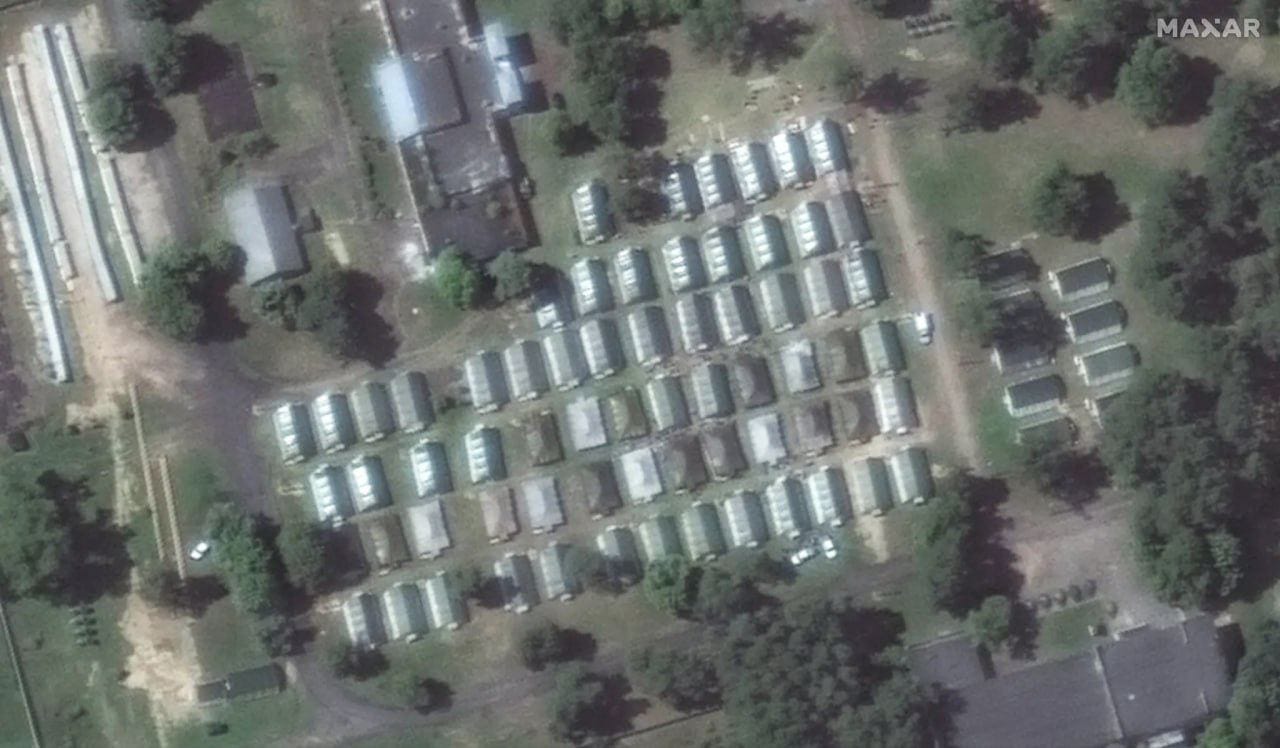
Meanwhile, after some speculation on social media, both inside and outside Russia, the Kremlin-owned TASS News Agency confirmed that President Vladimir Putin had earlier held a three-hour-long meeting with Prigozhin and over thirty of his Wagner mercenary commanders on 29 June 2023.
Putin stated after the meeting that he was willing to allow the men continue fighting together as a single group provided they agreed to submit to the MOD plan to absorb them into the regular army. With a note of disappointment, Putin then says that Prigozhin, speaking on behalf of the commanders, said “no.”
Piecing together what Putin said to the media after the meeting and what I have learnt from a press interview of top Wagner Commander Anton Yelizarov (alias “Lotus”), I have built up a complete picture of what I think happened.
After Putin gave the three options—amnesty plus retirement or full absorption into the regular army or Belarusian exile—the Wagner commanders thought there was the possibility for a fourth option. That fourth option, their preferred choice, was a return to status quo ante. They wanted to continue the fight in Ukraine, but as private mercenaries of the Wagner Group not as regular soldiers.
At the request of these mercenary commanders, Putin had convened the meeting. In an expression of loyalty to their mercurial Wagner employer, these commanders had brought Prigozhin along, despite knowing that it would irritate the Russian President. Nevertheless, Putin listened politely to their plea for a return to the Ukrainian battlefield as privately-employed mercenaries and rejected it. Then the Russian President appealed to these men’s sense of patriotism and praised their valour on the battlefield, but failed to convince them to accept absorption into the regular army as a condition for being allowed back into the battlefield. During his pitch to the commanders, Putin had even offered to keep them and their men together as a single fighting unit provided they sign up as regular soldiers, but that generous concession failed to sway minds.
Since the 29 June meeting became public knowledge, I have heard from certain quarters that these commanders are being manipulated by Prigozhin. My rebuttal is simple— these commanders are hardened ex-military men not given to the emotions of twenty-something year olds. Indeed, many of the commanders are in the 40-55 age bracket.
More importantly, many of these commanders have deep-seated grievances against the MOD and when you hear their stories, you will come to understand their personal loyalty to Prigozhin.
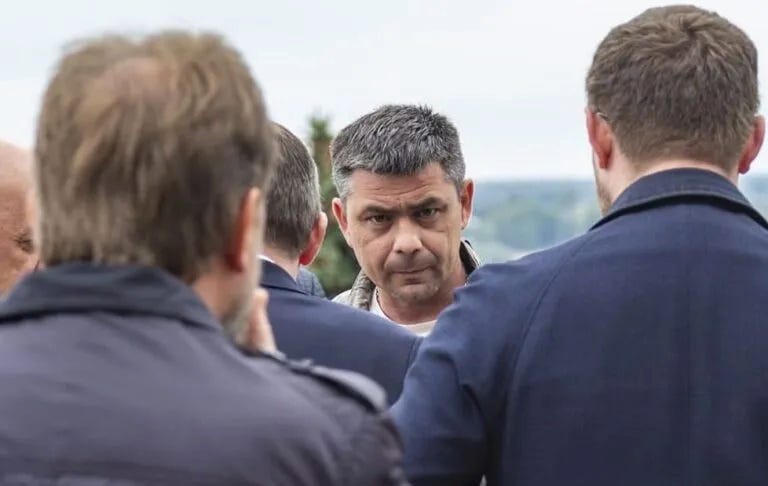
Wagner commander Anton Yelizarov was given a second chance in life by Prigozhin after being dishonourably kicked out of the regular army. In a recent interview, Lotus lays the blame for his misfortune at the feet of the Defence Ministry. In other words, the most senior Wagner commander in the Ukrainian war theatre—until recently—harbour a personal greviance against the MOD.
In that rare interview, a defiant Anton Yelizarov blasted attempts to “separate Prigozhin from the Wagner company that he created.” Hilariously, Yelizarov compared Prigozhin and his commanders to the mythical King Arthur and his Knights of the Round Table. In his own words, Anton described Prigozhin as “the leader” and Wagner commanders as “the knights”. No attempt to divide the Wagner Council of Commanders—chaired by Prigozhin—would ever be allowed to succeed, he told his interviewer.
Echoing his boss, Prigozhin, the forty-two-year-old mercenary nicknamed “Lotus” claimed that Shoigu was “corrupt” and so were many other unnamed generals of the Russian Army. He also stated in the interview that Prigozhin has ordered the Wagner commanders to go on vacation until early August. After that, the commanders would move to Belarus to commence their exile.
I would like to reiterate that Anton Yelizarov (alias “Lotus”) was the most senior Wagner commander in the Ukrainian war theatre. He was the military man in charge of Wagner’s successful assault in Soledar and Bakhmut.
Below is a January 2023 video clip of Prigozhin introducing “Lotus” as the “commander who captured Soledar” :
It should be noted that this same “Lotus” is also among the Wagner Commanders that have “experienced” Africa. He was in Central Africa Republic from 2018 to 2019 and appeared briefly in Libya in 2022.
Before going to the African continent, Lotus had fought in Syria where he was wounded in 2017. In other words, he likely had brothers-in-arms who died during the February 2018 aerial attack carried out by the Americans on a Wagner convoy in Syria. Many in the Wagner Group believe that Gerasimov deliberately allowed the Americans to strike their colleagues in Syria.
So, when you combine anger at being dishonourably kicked out of the regular army and the February 2018 aerial attack in Syria, the top Wagner commander had a huge personal axe to grind with the Shoigu-Gerasimov tandem.
Much has been made of Putin’s comment that it was Prigozhin that rejected his recommendation to the Wagner commanders to accept absorption into regular armed forces as a condition for their reinstatement to the Ukrainian battlefield. However, the simple fact remains that none of the Wagner commanders who met Putin in the three-hour-meeting has dissented from Prigozhin’s rejection. To my knowledge, the Wagner commanders that attended the June 29 meeting have not said that Prigozhin did not speak on their behalf.
In fact, the commanders and a significant number of the foot soldiers of the Wagner Group may have just accepted Belarusian exile rather than Putin’s recommendation of absorption into regular armed forces. A video has since emerged showing a long convoy of Wagner vehicles moving to Belarus:
Belarus TV has reported that Wagner mercenaries have arrived to train Belarusian Territorial Defence Troops :
What is President Aleksandr Lukashenko’s long term plan for the estimated 10,000 Wagner mercenaries currently filling up the sprawling military camp he had erected near the town of Osipovichi? Perhaps, Lukashenko himself doesn’t yet know.

For the time being, it seems that the main purpose of these exiled mercenaries is to serve as a distraction to Poland, Lithuania and the larger NATO establishment. The statement by Russian legislator and ex-military man, Andrey Kartapolov, about the planned use of Wagner to secure the Suwałki corridor to the Russian exclave of Kaliningrad on the Baltic coast has further deepened Polish and Lithuanian fears about the mercenaries next door in Belarus.
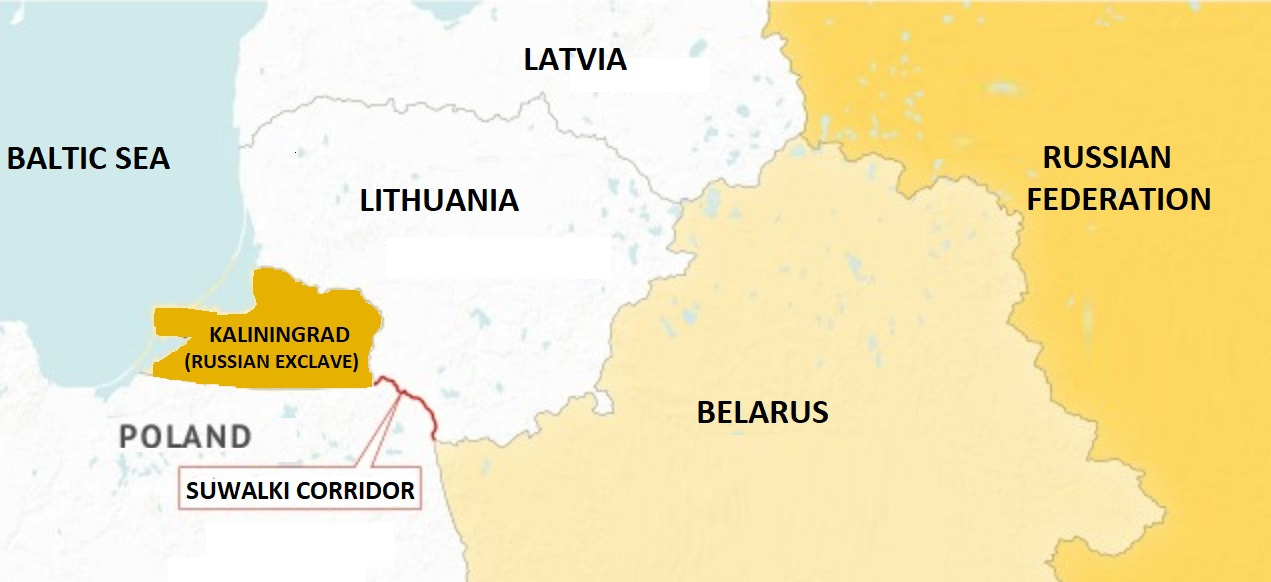
The 40-mile (65-kilometre)-long strip of land corridor separating Kaliningrad and Belarus also forms the Polish-Lithuania border. So, to “secure it”, in the words of the retired Colonel-General Andrey Kartapolov, would mean conquering shared sovereign territory belonging to two East European member-states of NATO.
For what it is worth, I personally think the words of Kartapolov about Suwałki corridor is a gigantic bluff, which has now worked its magic on paranoid governments in Warsaw and Vilnius, and excited Euro-American media outlets.
EXHIBIT ‘A’ : The Daily Mail Headline
EXHIBIT ‘B’: Deutsche Welle (DW) Headline
Next is a video clip of Lukashenko telling a clearly amused Putin that exiled Wagner troops in Belarus are itching to go westward into Poland:
From the body language of Putin in the video, one can see that the Russian leader is enjoying the fearful reaction of Poland and Lithuania to the presence of the mercenaries in their neck of the woods.
Inevitably, some people would claim that the Prigozhin’s mutiny was an elaborate Kremlin-run military deception operation— a highly convoluted version of the famed “Maskirovka”— aimed at sending these mercenaries to Belarus.
Not true, in my own opinion. If Russia can straightforwardly deploy tactical nuclear bombs to Belarus, then it can straightforwardly deploy Wagner troops to Belarus without having to presage it with a stage-managed “fake mutiny”. The mutiny was genuine and twelve or thirteen Russian Aerospace personnel died when the mutineers shot down their military plane.
I think that Putin’s leniency towards the mutineers has been misunderstood by many observers. Anybody who has closely watched the Russian leader over the years would come to understand that the man is not impulsive at all and always seemed to have a high level of patience and tolerance for perfidious behaviour of successive government leaders in Europe and USA— qualities that led some clueless pundits of NATO-aligned think-tanks to dismiss him as “weak” and dismayed many Russian nationalist hardliners who decry “Putin’s indecisiveness”. Some Russian nationalists, such as Igor Girkin (alias “Strelkov”), have even gone as far as to denounce Putin as a “cowardly low life”.
For years, many Russians were surprised at Putin’s insistence on politely referring to government leaders of NATO countries as “partners” and “friends” even as those leaders constantly referred to him as “despot”, “dictator” and “murderer”. Putin’s decades-old polite terminology for those NATO leaders only changed after he authorized Russian military forces to enter Ukraine in February 2022.
Apart from patience and restraint, another quality of Putin is adaptability. His disposition accords with the dictum— when life gives you lemons, make lemonade. The Russian President has taken the failed Wagner revolt in stride and―through the intercession of Lukashenko― he has sent the renegade mercenaries to Belarus where they can serve as a distraction to Poland and Lithuania.
Worried and threatened by the presence of the mercenaries so close to their neck of the woods, Poland has since deployed troops close to the Belarus border.
In other words, Putin has managed to use the wayward Russian mercenaries to tie down some Polish government soldiers, who could otherwise be sent into Ukraine disguised as “freelance military volunteers”. More importantly, the presence of Wagner troops —combined with Russian tactical nukes—on Belarusian soil will obviously cause Poland to think carefully about its (alleged) plans to move its troops into West Ukraine.
THE FUTURE OF WAGNER OPERATIONS IN AFRICA
In the aftermath of the Prigozhin's mutiny, the question must be what will become of Wagner forces currently stationed in some African countries in the long run?
The simple answer to the question is— I don’t know.
Twenty-four hours after the Prigozhin-led mutiny, my first guess was that Putin will behave true to his nature. Given his risk averse and phlegmatic nature, I speculated that Wagner mercenaries in the African states would be allowed to get on with their work of dealing with jihadist insurgents while a permanent solution was sought.
It didn’t take long for veteran Russian Foreign Minister Sergei Lavrov to confirm in an interview with Russia Today TV channel that the Kremlin would not impede Wagner’s counterinsurgency operations in the African states.
The Russian government-owned Sputnik Radio spoke to President Faustin-Archange Touadéra of Central African Republic (C.A.R), which is hosting a large contingent of Wagner troops. The C.A.R President said that he had no problems with the Wagner Group continuing their military operations in his country, notwithstanding the failed mutiny. However, he said that he was open to the idea of another Russian mercenary outfit supplanting the Wagner Group if the Kremlin suggests it.
Meanwhile, 1,844 miles away from C.A.R, the West African nations of Mali and Burkina Faso show no signs of equivocation in the wake of the Prigozhin mutiny. In Mali, Wagner mercenaries remain the spearhead of the fight against jihadist rebels even as NATO-aligned Euro-American corporate media continue spreading the memetic allegations of “Wagner massacring the civilians”, which never seem to get through to the brains of Malian civilians who continue to wave Russian flags at heavily attended rallies.
Within weeks of Sputnik Radio speaking to President Touadéra, there have been claims in the Paris-based, French-language Jeune Afrique magazine that about 500-600 Wagner mercenaries have been demobilized and flown out of the Central African Republic. I have no way of knowing whether this report is true or false, but what can’t be currently disputed is that Wagner troops are still on the ground in C.A.R, even if their numbers have been reduced.

Despite the plethora of investigations opened by Russian law enforcement agencies into the financial activities of Prigozhin’s conglomerate, The Concord Group, I have seen no evidence that the Kremlin is moving to completely destroy the mercenary component of the conglomerate.
The vast majority of the original 32,000 Wagner troops that did not participate in the mutiny have automatically exited the mercenary outfit by agreeing to be absorbed into the regular army. However, there has also been no attempt whatsoever on the part of the Kremlin to get the Defence Ministry to wrest control of what remains of the Wagner Group from Prigozhin. Instead, all we have seen is the Kremlin allowing the rump Wagner Group consisting of 8,000—10,000 men loyal to Prigozhin to move to Belarus.
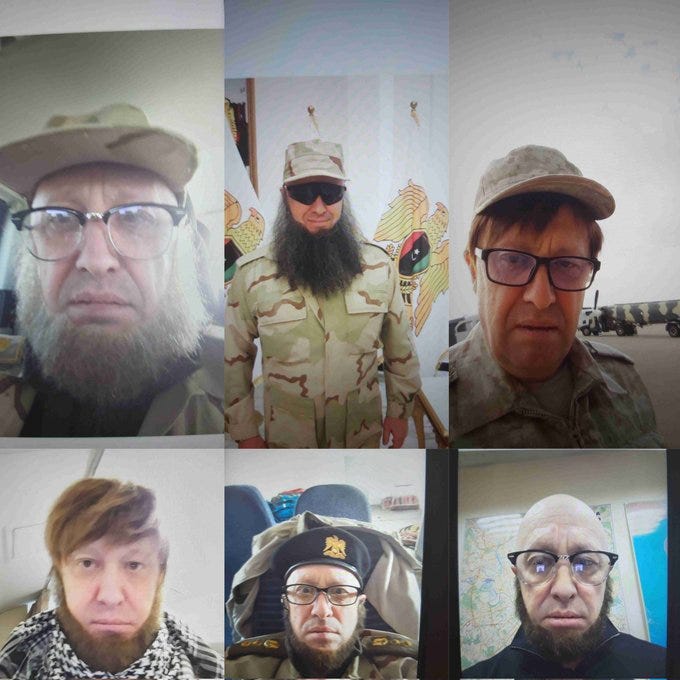
Prigozhin himself has been quite upbeat about the future of his mercenary outfit. If his cheerfulness is anything to go by, then one may have to disregard the story being peddled by Jeune Afrique magazine about a plan to slowly dismantle Wagner’s operations on the African continent. I would also hasten to add at this juncture that Prigozhin’s Concord Management & Consulting has been officially registered in Belarus— even as the Russian branch of the company is in a state of being liquidated by Kremlin-controlled law enforcement agencies.
A video has now surfaced of Prigozhin addressing many of his mercenary employees in Belarus on the night of 19 July 2023:
In the video, which presumably includes senior members of the Wagner Council of Commanders, Prigozhin praises his troops for fighting bravely on the battlefields of Ukraine. He warns them to behave themselves in Belarus and treat their Belarusian hosts with respect. To cheer the men up, he tells them that they would eventually be returning to Africa.
After completing his address, Prigozhin steps back and hands over to senior commander, Dmitriy Utkin (alias “Wagner”), who reminds the cheering men that their mercenary outfit got its name from him. The senior commander also addressed a few words in heavily accented English to spooks of the Central Intelligence Agency who might be watching the video and monitoring other news reports about the Wagner Group.
So, why does Prigozhin mention the continent to cheer up the men? Well, the answer is rather simple— to be in Africa is to be free of the meddlesome Shoigu, Gerasimov and the Russian Ministry of Defence. To be in Central Africa Republic and Republic of Mali is to be on friendly territory controlled by highly appreciative host governments willing to pay generous salaries and obtain any extra weaponry you might request in the name of counterinsurgency operations. To be in any of these countries is to be in the presence of African locals grateful that you are there to achieve what their incompetent government soldiers could not. That is, combining sound military strategy and heavy firepower to crush the terrorist insurgents.
Prigozhin may be physically present in Eastern Europe, but his mind is in Africa. The man is already thinking of how to expand Wagner’s footprint on the continent. In contrast to the Kremlin’s cautious call for the “restoration of constitutional order” in Niger Republic, the Wagner boss has welcomed the recent military coup in that Francophone country, stating that: “what happened in Niger is nothing more than the struggle of the people of Niger against colonizers, who tried to impose their own rules of life.”
In other words, Prigozhin is hoping that the new military junta in Niger Republic will take the same Yellow Brick Road travelled by fellow military juntas in Burkina Faso and Mali. That road would entail kicking out French troops, signing a contract with Prigozhin and importing Wagner mercenaries to fight terrorist insurgents unleashed when NATO destroyed Libya’s statehood and allowed the weapons it had air-dropped to its Islamist proxies during the Libyan Civil War (2011) to proliferate throughout the Sahel Belt of West Africa.
Of course, there is no proof that this new military junta in Niger would even look in the direction of the hopeful Wagner boss. In fact, plenty rests on the reaction of France and ECOWAS to the putsch. Military coups in Niger Republic are always about unprincipled soldiers wanting to gain access to the treasury rather than any high-minded attempts to reform and improve the country.
Macron’s recent denunciation of the “coup against democracy” is not a good sign. The condemnation may sound lovely, principled, and in accordance with the dictates of the Economic Community of West African States (ECOWAS), which has suspended the memberships of Mali, Burkina Faso and Guinea, but such criticism from Paris is likely to antagonize the military dictatorship in Niger Republic and compel it to travel down Prigozhin’s imagined Yellow Brick Road unless the ECOWAS sends troops to restore the democratically elected government of Niger Republic as it is threatening to do.

Nigeria, the regional hegemon, does have a history of militarily intervening to restore overthrown governments in West Africa. Nigeria intervened in Sierra Leone (1997) to restore the elected President Tejan Kabbah to office and was part of a multinational ECOWAS force sent to end Gambia’s constitutional crisis (2017) and stabilize Guinea-Bissau (1999, 2012, 2022). In attempt to restore order, Nigeria also intervened in the First Liberian Civil War (1989-1997) and the Second Liberian Civil War (1999-2003).
Nigeria regularly provides neighbouring Niger Republic with monetary grants, lorries of grain and some free electricity. Although, Nigeria itself is not self-sufficient in food production and domestic electric power supply must be paid for. But hey, charity begins abroad (not at home).
Would ECOWAS act on its threat to remove the new military junta in Niger Republic? Based on past behaviour, I would say, it is likely—which means that Prigozhin’ expectations might yet be dashed. Regardless of how events in Niger turn out, I doubt it will derail the Wagner CEO’s long term plans to relocate his men to the friendlier African continent.

So, what does Putin and Lukashenko think of Prigozhin’s long term plan to eventually shift his men from Belarus back to the African continent? Are they in agreement with such movement? I don’t know for sure.
But my guess would be that both Presidents may welcome the eventual movement of the mercurial Wagner boss and his mercenaries to far flung Africa with a sigh of relief.
In the meantime, Wagner’s presence in Belarus is serving a good purpose—the engagement of Polish troops in a fixing operation.
THE END
Dear reader, if you like my work and feel like making a small donation, then kindly make for my Digital Tip Jar at Buy Me A Coffee

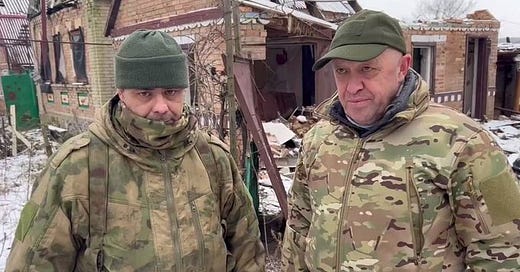





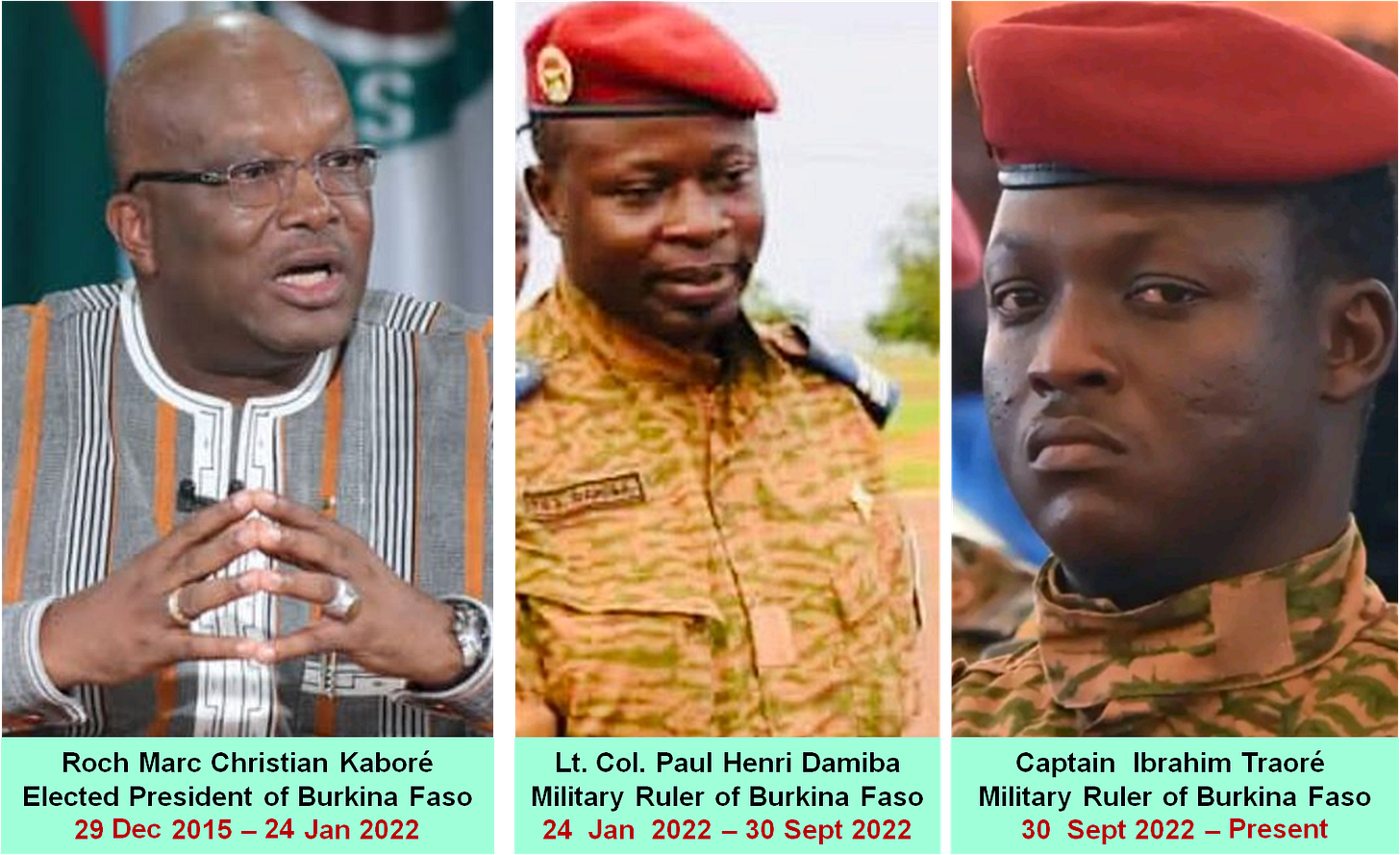





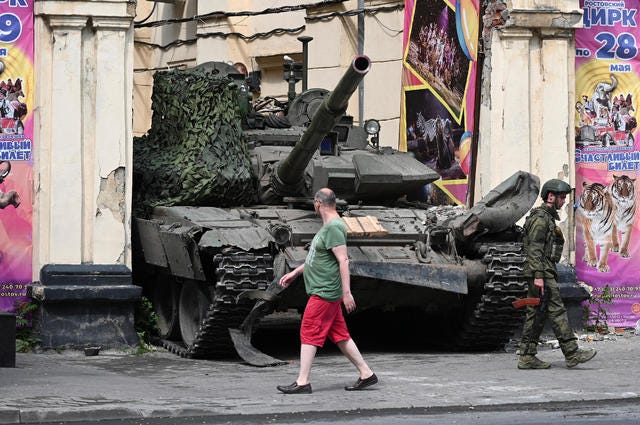



Magnificent article. Thank you.
Awesome in depth article!